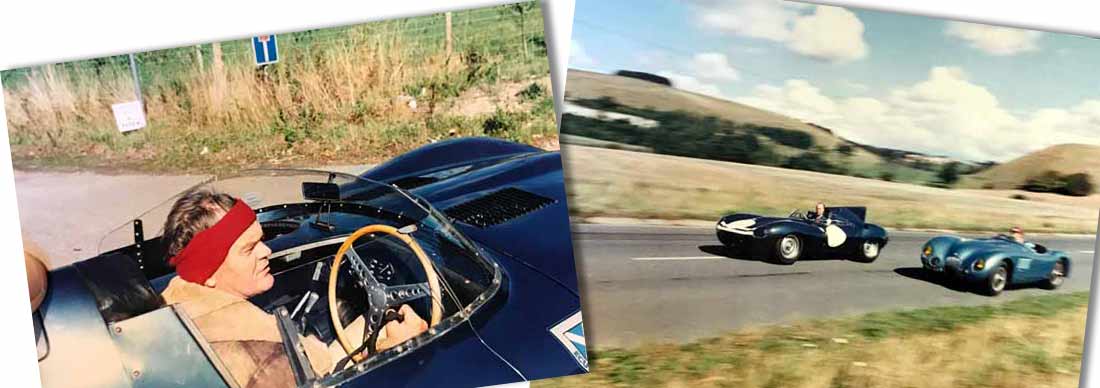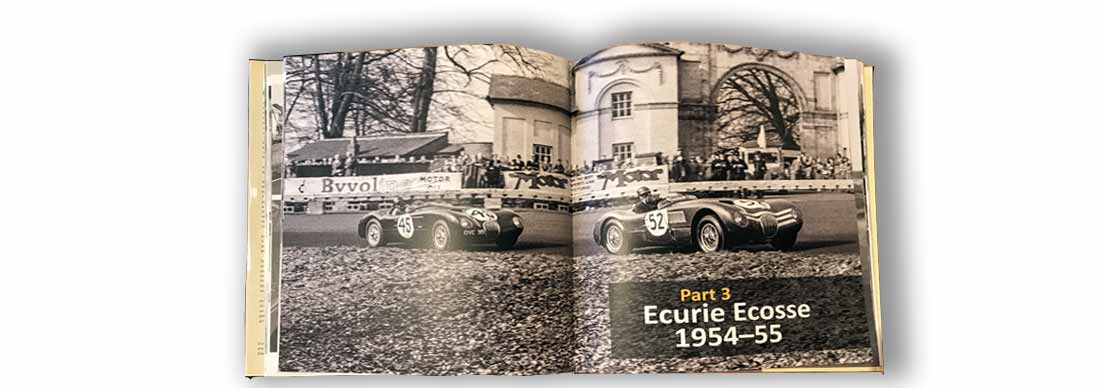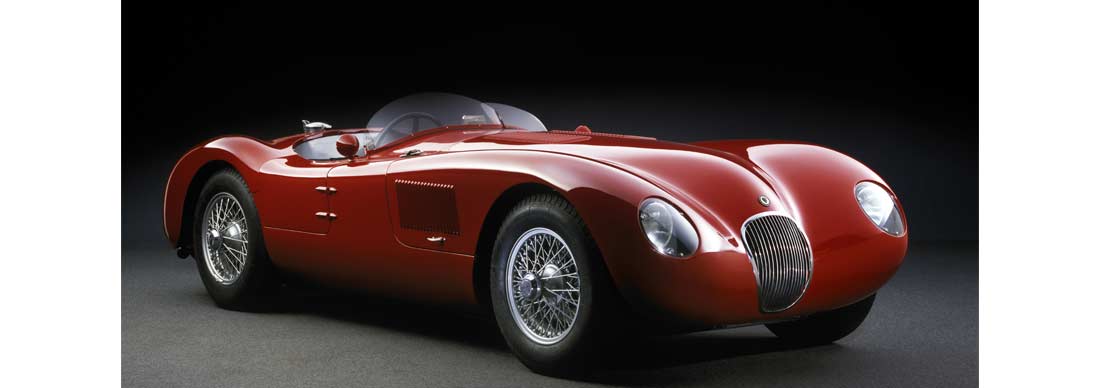
Alan Clark - Some Personal Memories, by Philip Porter
The Rt Hon Alan Clark was a Conservative politician, Government Minister, military historian and author, and diarist but, above all, he was a car enthusiast through and through. A man of strong opinions, and not afraid to express them, he had an eclectic taste in motor cars.

Photograph by James Clark
From his father, who was known as Lord Clark of ‘Civilisation’ after his major television series of that name on art and architecture, Alan inherited his amazing home, Saltwood Castle in Kent. There, over the years, he kept his 1958 Bentley Continental SI, 1932 Invicta ‘S’ Type, SS Jaguar 100, 1947 Talbot Lago GP car, 1957 Porsche 550 Spyder, 1929 Mercedes 38/250 SS, 1928 4½ litre Bentley, assorted Rolls-Royces, and his XK 120 roadster which he had had from new.
He had taught himself to drive with his first car, a 6½ litre Bentley with a Mulliner two-seater body which he bought while at school at Eton. Such cars were, of course, worth little or nothing in the ‘40s and ‘50s. While a student, he turned down the Sedanca-bodied Bugatti Royale, residing in a scruffy state in Lancaster Mews. Peter Hugo in his book Private Motor Car Collections of Great Britain states, ‘and then there was that special SSK Mercedes with fitted luggage on the running boards that Bunty Scott-Moncriefh had for a time…’ Clark was briefly the UK correspondent for the US magazine Road and Track.
 When we organised a dinner at the House of Commons to celebrate the 50th anniversary of the Jaguar XK in 1998, Alan was our guest speaker. I always remember him saying, ‘There is nothing in the world like the sound of a 120 on factory twins’. His C-type (XKC 013) was casually parked outside the Houses of Parliament.
When we organised a dinner at the House of Commons to celebrate the 50th anniversary of the Jaguar XK in 1998, Alan was our guest speaker. I always remember him saying, ‘There is nothing in the world like the sound of a 120 on factory twins’. His C-type (XKC 013) was casually parked outside the Houses of Parliament.

Later he became the second Patron of our XK Club (the first was Ian Appleyard and the third Stirling Moss) and we held an unforgettable day at Saltwood Castle. Tragically, he had suffered a brain tumour (actually the evening of our initial visit to discuss the forthcoming day at Saltwood) and by the time of the event was very seriously ill. Against medical advice, he came out to admire the cars and we wandered around chatting. Recalling a similar event for a distinguished make of cars a couple of years prior, after making very positive comments about the XKs, he then said, by way of contrast, ‘You know there’s something awfully funereal about Rolls-Royces’. Poignant words, as he died a fortnight later.
A wonderful story was told at his memorial service. At Oxford, he was banned for driving for six weeks for teaching a young lady to drive. What is wrong with that, you may ask? Alan’s method of teaching a young lady to drive was a little unconventional: she sat on his lap in his Buick Roadster and steered while he operated the pedals!

When I wrote my book Jaguar Sports Racing Cars, we spent a splendid day together for a major feature in The Daily Telegraph to publicise the book. The gist of this was Alan’s views and comparison of the C-type, D-type and Lightweight E. My good friend Chris Keith-Lucas had organised a famous D-type and E-type, and Alan used his own C-type. I was lucky enough to drive 5114 WK, the ex-Cunningham Lightweight E, from the Lynx premises (this was some time before Chris formed CKL Developments) to Saltwood, a good hour’s run from memory.

Clark was not an E-type man - bit modern for him - and, although he had owned a D-type (XKD 516), he was devoted to his C-type and argued strongly for them in the article.

We keep in touch with Jane, his widow, and visited Saltwood en route to Retromobile last February (remember the days when we were allowed to travel and visit friends?). Son Andrew has recently returned from some years abroad and plans to get the 120 back on the road.
Alan was a fascinating man and extremely knowledgeable about ‘proper’ cars. He was a maverick, a true eccentric and a gentleman.
Other articles by Philip Porter






1 comment
I have a 1964 Porsche 356 sc which I have been told was once owned by Alan Clark in the 60’s, Is there any way this can be substantiated?
Andy Hope
Leave a comment
This site is protected by hCaptcha and the hCaptcha Privacy Policy and Terms of Service apply.